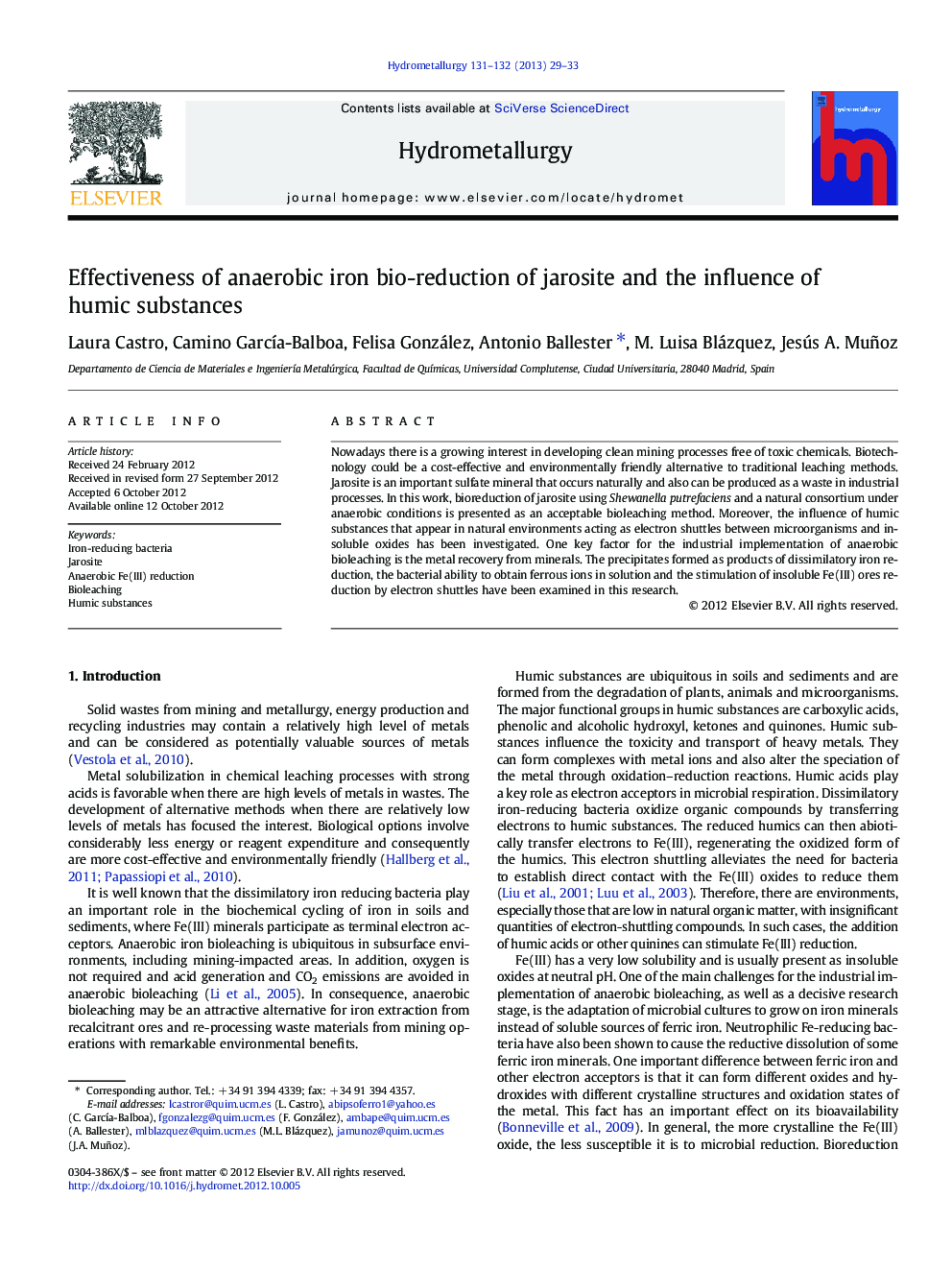| Article ID | Journal | Published Year | Pages | File Type |
|---|---|---|---|---|
| 212435 | Hydrometallurgy | 2013 | 5 Pages |
Nowadays there is a growing interest in developing clean mining processes free of toxic chemicals. Biotechnology could be a cost-effective and environmentally friendly alternative to traditional leaching methods. Jarosite is an important sulfate mineral that occurs naturally and also can be produced as a waste in industrial processes. In this work, bioreduction of jarosite using Shewanella putrefaciens and a natural consortium under anaerobic conditions is presented as an acceptable bioleaching method. Moreover, the influence of humic substances that appear in natural environments acting as electron shuttles between microorganisms and insoluble oxides has been investigated. One key factor for the industrial implementation of anaerobic bioleaching is the metal recovery from minerals. The precipitates formed as products of dissimilatory iron reduction, the bacterial ability to obtain ferrous ions in solution and the stimulation of insoluble Fe(III) ores reduction by electron shuttles have been examined in this research.
► Fe(III) jarosite reduction and Fe(II) solubilization by two cultures is studied. ► The influence of humic substances in the process was evaluated. ► The mixed culture reduces 70% of Fe(III) in one week forming Fe(II)-precipitates. ► S. putrefaciens kept in solution most of Fe(II) and humics accelerate the reaction.
